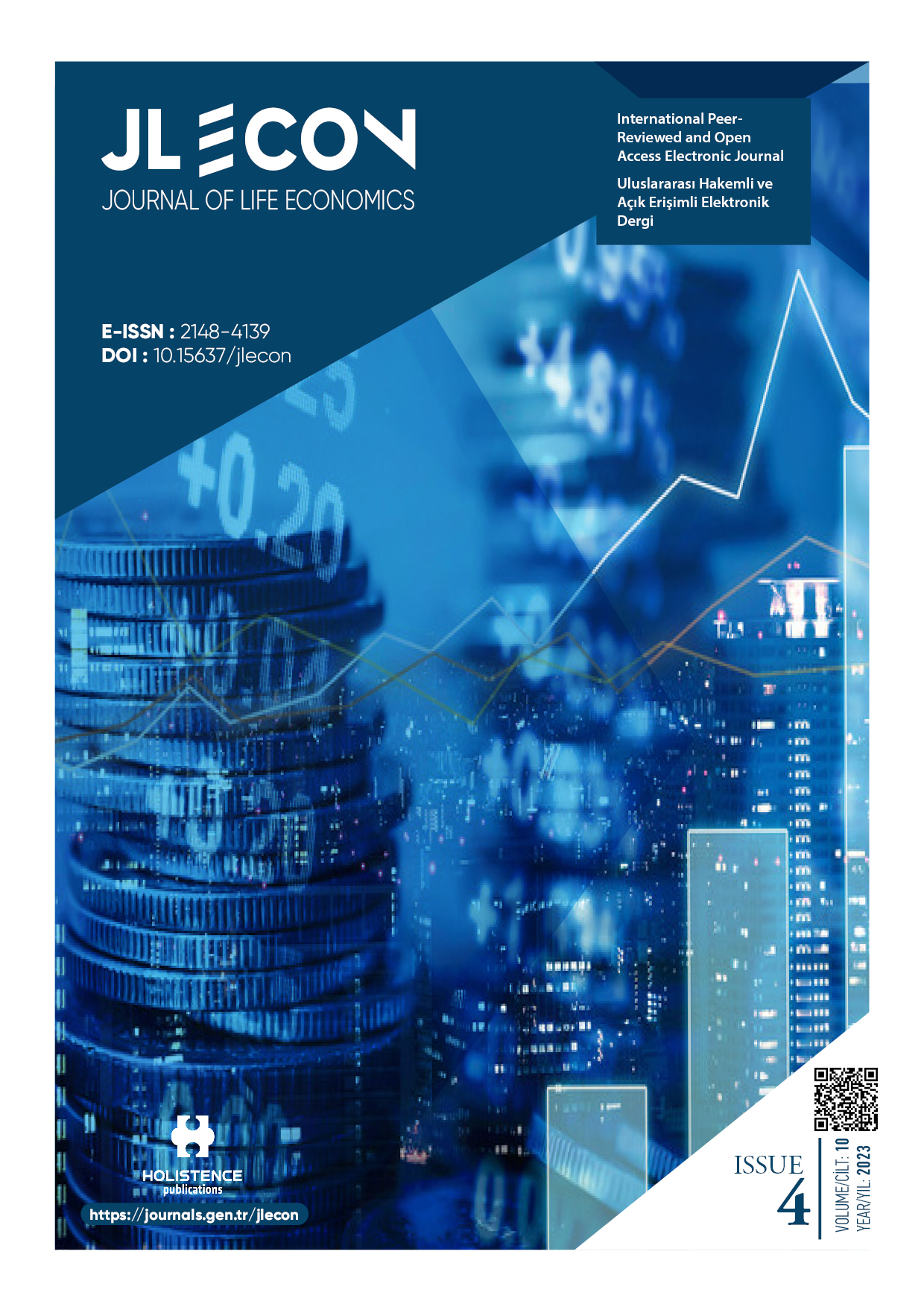A public fund for financing conservation activities: Contribution share for preservation of the immovable cultural assets
DOI:
https://doi.org/10.15637/jlecon.2220Keywords:
Immovable cultural assets, Conservation activities, Financial support, Contribution share for the preservation of immovable cultural assets, GaziantepAbstract
Immovable cultural assets constitute the common heritage of humanity and are among the most important elements of the built environment. As a public duty and a social responsibility, the effective preservation of cultural assets and their transfer to future generations require not only expertise and experience but also financial resources. The costs of conservation activities are mainly borne by the owner of the immovable cultural asset, while the state, as a constitutional obligation, provides facilitating financial solutions for these costs. Considering the number of immovable cultural assets in Turkey, it is a fact that public resources are limited. In order to create alternative public resources, a new public fund was introduced in 2004 with an amendment to the Law No. 2863 under the name of ‘Contribution Share for the Preservation of Immovable Cultural Assets’ by charging tax authors an additional 10% of their real estate taxes. The focus of the study is on this public fund. Within the scope of the study, the administrative system for the preservation of immovable cultural assets is first summarized, followingly direct and indirect financial supports for the financing of conservation activities is discussed. Then, the details about the contribution share for the preservation of immovable cultural assets are presented in a legislative manner and the contribution share system is analysed for the province of Gaziantep in the period covering the years 2014- 2018. As a result of the study, it is concluded that this public fund is a solution to the problems of conservation financing, especially in developing countries, and at the same time, it provides social justice by distributing the cost of conservation activities to the whole society.
Downloads
References
BAYKAN, A. E. (2011). Taşınmaz Kültür Varlıklarının Korunmasına Yönelik Finans Yönetimi: İstanbul Üzerine Bir İnceleme. Yüksek Lisans Tezi, Fen Bilimleri Enstitüsü, İstanbul Teknik Üniversitesi.
CLAUSSE, J. (2013) Funding sources for preserving Cultural Heritage Monuments and Sites. The specific case of the “7 Most Endangered” Initiative by EIB-I and Europa Nostra. http://www.europanostra.org/wp-content/uploads/2017/04/7ME-2013-EIBI-HeritageFundingOverview.pdf [Erişim Tarihi: 30/09/2023].
GAZİANTEP BÜYÜKŞEHİR BELEDİYESİ (2018). 2018 Yılı Gaziantep Büyükşehir Belediyesi Faaliyet Raporu. https://www.gaziantep.bel.tr/uploads/2020/07/2018-faaliyet-raporu-kitapcik.pdf [Erişim Tarihi: 30/09/2023].
GOLDING, F. (1996). Conservation Economics - Rapporteur' s Report, 10th ICOMOS General Assembly. 27-31 Temmuz 1993 Colombo. Colombo: Central Cultural Fund Publications, 233-235.
GÖĞEBAKAN, Y. (2015). Dünya Üzerindeki Kültürel Varlıkların Turizme ve Ekonomiye Katkısı. Sanat ve Tasarım Dergisi. 5(2), 48-71. https://doi.org/10.20488/austd.13781
ICOMOS (1965). The Venice Charter - International Charter for the Conservation And Restoration of Monuments and Sites. https://www.icomos.org/en/participer/179-articles-en-francais/ressources/charters-and-standards/157-thevenice-charter [Erişim Tarihi: 30/09/2023].
JELINCIC, D. A. & SVEB, M. (2021). Financial Sustainability of Cultural Heritage: A Review of Crowdfunding in Europe. Journal of Risk and Financial Management. 14(3), 101. https://doi.org/10.3390/jrfm14030101
KANADOĞLU, S. (2003). Kültür ve Tabiat Varlıklarını Koruma Hukuku. Ankara: Seçkin Yayıncılık, 2. Baskı.
KİTİR, M. (2016). Taşınmaz Kültür Varlıklarının Korunmasına Ait Katkı Payı Fonunun Kullanılmasında Yaşanan Sorunlar, Konya Örneği Üzerine Bir İnceleme. Yüksek Lisans Tezi, Fen Bilimleri Enstitüsü, Selçuk Üniversitesi.
KOÇ, Z. (2007). Türkiye’de Taşınmaz Kültür Varlıkları ve Mali Teşvikler. Doktora Tezi, Sosyal Bilimler Enstitüsü, Marmara Üniversitesi.
KVMGM (Kültür Varlıkları ve Müzeler Genel Müdürlüğü). (2023a). Kültür Varlıklarını Koruma Bölge Kurulu Müdürlükleri. https://kvmgm.ktb.gov.tr/TR-43078/kultur-varliklarini-koruma-bolge-kurulu-mudurlukleri.html [Erişim Tarihi: 13/10/2023].
KVMGM (Kültür Varlıkları ve Müzeler Genel Müdürlüğü). (2023). Koruma Uygulama ve Denetim Büroları (KUDEB). https://kvmgm.ktb.gov.tr/TR-44966/koruma-uygulama-ve-denetim-burolari-kudeb.html [Erişim Tarihi: 13/10/2023].
LICHFIELD, N. (1996). Conservation Economics - Introduction, 10th ICOMOS General Assembly. 27-31 Temmuz 1993 Colombo. Colombo: Central Cultural Fund Publications, 223-229.
ÖZEL, S. (2005). 5226 Sayılı “Kültür ve Tabiat Varlıklarını Koruma Kanunu İle Çeşitli Kanunlarda Değişiklik Yapılması Hakkında Kanun” Üzerine Bir Değerlendirme. İstanbul Üniversitesi Hukuk Fakültesi Mecmuası. 63(1-2), 113-138.
RIZZO, I. & THROSBY D. (2006). Chapter 28 Cultural Heritage: Economic Analysis and Public Policy. Handbook of the Economics of Art and Culture. 1(2006), 983-1016. https://doi.org/10.1016/S1574-0676(06)01028-3
SÜSLÜ, G. (2018). Kültür Varlıklarının Korunmasında Mali Kolaylıklar Rejimi. Yıldırım Beyazıt Hukuk Dergisi. 3(2), 37-83.
TBMM (Türkiye Büyük Millet Meclisi) (2003) Kültür ve Tabiat Varlıklarını Koruma Kanunu İle Çeşitli Kanunlarda Değişiklik Yapılması Hakkında Kanun Tasarısı Komisyon Raporu. https://www.tbmm.gov.tr/Yasama/KanunTeklifi/f72877bd-b32d-037b-e050-007f01005610 [Erişim Tarihi: 30/09/2023].
THROSBY, D. (2012). Heritage Economics: A Conceptual Framework. içinde The Economics of Unıqueness: Investing in Historic City Cores and Cultural Heritage Assets for Sustainable Development. Eds: G. Licciardi & R. Amirtahmasebi. Ss.45-74. Washington DC: The World Bank, ISBN: 978-0-8213-9706-0.
ULUSAN, E. & ERSOY, M. (2018). Financing the Preservation of Historical Buildings in Turkey. METU Journal of Faculty of Architecture. 35(2), 251-267. https://www.doi.org/10.4305/METU.JFA.2018.1.4
UMAR, B. (2005). 2863 Sayılı Kültür ve Tabiat Varlıklarını Koruma Kanununa Getirilen Değişiklikler Üzerine. Yeditepe Üniversitesi Hukuk Fakültesi Dergisi. I(2), 15-46.
Downloads
Published
How to Cite
Issue
Section
License
Copyright (c) 2023 Holistence Publications

This work is licensed under a Creative Commons Attribution 4.0 International License.
When the article is accepted for publication in the Journal of Life Economics, authors transfer all copyright in the article to the Holistence Publications.The authors reserve all proprietary right other than copyright, such as patent rights.
Everyone who is listed as an author in this article should have made a substantial, direct, intellectual contribution to the work and should take public responsibility for it.
This paper contains works that have not previously published or not under consideration for publication in other journals.

















